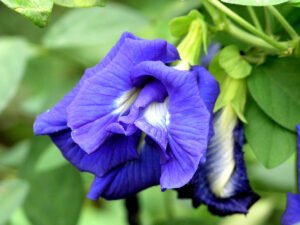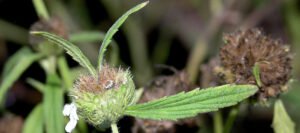
ScientificName: Passiflora incarnata
Common Name: Passion Fruit
Family: PASSIFLORACEAE
Parts Use: Leaf, Flower and Twig
Embracing Tranquility: The Serene Power of Passiflora incarnata (Passionflower)
With its strikingly intricate and almost otherworldly blooms, Passiflora incarnata, commonly known as Passionflower, is a botanical marvel. Native to the southeastern United States and Central and South America, this beautiful climbing vine is not only a delight to the eye but also a cherished herb in traditional medicine, celebrated for its remarkable ability to bring a sense of calm and promote restful sleep.
A Flower of Intrigue and Symbolism
The unique structure of the Passionflower blossom, with its intricate filaments, sepals, and petals, led early European missionaries to associate it with the Passion of Christ (hence “Passionflower”). Beyond its religious symbolism, its visual complexity hints at the rich array of beneficial compounds contained within. Passiflora incarnata is a perennial vine with distinctively lobed leaves and edible, sweet-tart fruits (known as maypops).
A Long History of Peaceful Use
For centuries, indigenous communities and later, European herbalists, have turned to Passionflower for its soothing properties:
- Promoting Relaxation and Calm: This is Passionflower’s most well-known traditional use. Preparations from the aerial parts of the plant (leaves, stems, flowers) have been historically used to help alleviate feelings of nervousness, stress, and mild anxiety.
- Supporting Restful Sleep: Due to its calming effects, Passionflower is widely used as a traditional aid for occasional sleeplessness, helping to promote a peaceful transition to sleep and improve sleep quality.
- Easing Nervous Discomfort: In some traditional contexts, it was used to help soothe general nervous tension and related minor physical discomforts.
It’s important to understand that these are traditional uses rooted in historical folk medicine and not modern scientific medical claims.
The Science of Serenity: Key Compounds
Modern scientific research has increasingly focused on understanding the compounds responsible for Passionflower’s traditional effects. Studies have identified several key constituents:
- Flavonoids: These are a significant group of compounds found in Passiflora incarnata, including apigenin, vitexin, and isovitexin. Flavonoids are widely studied for their potential to interact with brain receptors, contributing to the herb’s calming properties.
- Alkaloids: While present in smaller amounts, certain indole alkaloids (such as harmane and harmine) have been identified, though their precise role in the plant’s overall calming effect is still being investigated.
- GABA (Gamma-aminobutyric acid): Passionflower is thought to influence levels of GABA, a neurotransmitter that helps regulate nerve activity, which may contribute to its relaxant properties.
.







Reviews
There are no reviews yet.